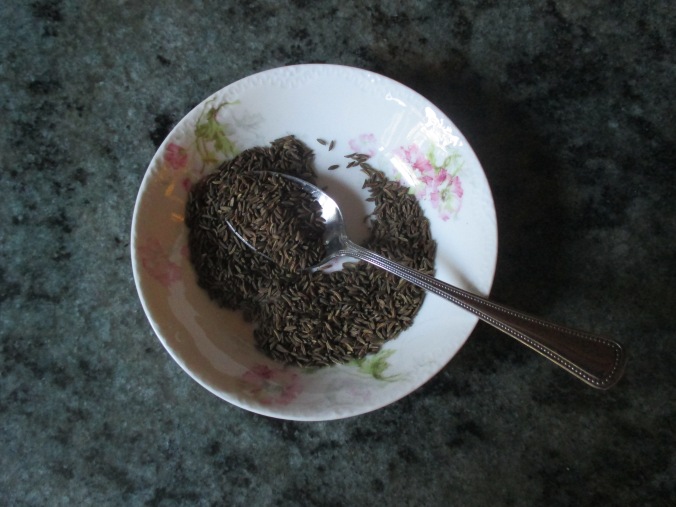This version of this post first appeared on the Folger Shakespeare Library’s Shakespeare and Beyond blog.

A plate of beautifully baked cookies is a wonderful thing. It is a welcoming gesture for guests, it signifies a holiday or a special meal, and it is a demonstration of a baker’s skill at making something pleasing to the eye and the palate. In Shakespeare’s England, bakers in elite households prepared sugar sculptures, confectionary, marzipan, and sweet doughs shaped into knots, twists, and letters.

Sweets were an occasion for British women to not only show that they were excellent bakers, but that they were masters of other handicrafts such as sewing and writing. In her book Pens and Needles: Women’s Textualities in Early Modern England, Susan Frye explores the deep and pervasive connection between sewing and writing in Renaissance culture. She writes, “Women from a variety of backgrounds created needlework pieces that placed accepted subjects in every room, that helped to clothe themselves and their families, and that declared the family’s social status, even as they may be read as personal and political expressions” (116). A woman’s style of knotting thread and creating samplers, or needlework pictures, was an indication of her class and taste. It was as individualized as handwriting. Likewise, as Wendy Wall shows in her book Recipes for Thought: Knowledge and Taste in the Early Modern English Kitchen, handwriting and needlework were connected to culinary skill. Although elite women employed cooks in their households, the lady of the house might personally participate in the preparation of finely shaped delicacies. Recipes that instructed cooks to shape soft dough or marzipan into “knots,” asked bakers to draw on their experience knotting thread as well as writing “knots,” meaning elaborate circular flourishes or majuscule and miniscule letterforms (Wall 143).

Over the course of Shakespeare’s lifetime, sugar went from being an incredibly expensive ingredient, imported overland from Asia, to a more widely used seasoning. Kim Hall’s scholarship on sugar and status in the period demonstrates that British women’s increased use of sugar implicated them in the systems of commerce and colonialism that kept people of African and Caribbean descent enslaved as laborers in sugar cane fields in the Americas. As these systems persisted in the century after Shakespeare’s death, sugar became cheaper still and more widely available to upper and middle class British people. A manuscript whose inception we can date to 1677, Folger manuscript V.b.380, shows a range of beautiful flourishing and handwriting as well as many recipes for spectacular sweets.

Original Recipe
“How to Make Knotts,” draws on a cook’s skill in shaping dough, writing, and sewing. The “Knotts” here are sweet cookies flavored with rosewater and caraway seeds. Although this flavor combination may sound unfamiliar, it is delicious and it was not uncommon in the period. Earlier this year, I prepared a delicious Seed Cake recipe with the same two dominant flavors.

How to Make Knotts
Take a pound of flower and halfe a pound of shuger
and 1/2: pound of butter and :2: whits and one yealke of Eggs
a Little rosewater and a few Caraway seeds mingled
all to gather and make them all into a past and then
make them into knots and lay them upon paper and
so past bake them
Updated Recipe
Makes 24 cookies
1 cup, 2 tablespoons sugar
2 sticks butter (1 cup), room temperature
1 egg plus 1 egg white
1 tablespoon rosewater
3 1/3 cups flour (plus extra flour for shaping)
1 tablespoon caraway seeds
½ teaspoon salt
Preheat oven to 350F. Prepare two baking sheets by lining them with baking parchment or greasing them with butter or baking spray.
Cream together butter and sugar. Add the eggs and rosewater and stir to combine. Mix in salt, caraway, and flour to form a dough.
Shape into knots, twists, and letters on a lightly floured surface.
Bake 20-25 minutes.
This recipe comes from my year-long investigation of Folger Shakespeare Library manuscript V.b.380 alongside students and collaborators. I would like to thank the students (past and present) in my What’s in a Recipe? independent study (run through the Abington College Undergraduate Research Activities program); my collaborators Christina Riehman-Murphy and Heather Froehlich; and Shivanni Selvaraj and the PSU Outreach Seeding Change Engagement Grant for supporting my students in their research, event planning, and engagement with Philadelphia.



Thanks for the background from the publications referenced, Marissa. I think readers would like to know that recipes for Jumbles (knot shaped cookies) date back at least to 1585 with “To make Iombils a hundred” in The Good Huswifes Jewell by Thomas Dawson.
Absolutely! Jumbles / Jumballs / Iombils are all over this recipe book tradition. I’ve made quite a few at this point, too! (https://rarecooking.com/tag/jumballs/)
Pingback: Almond Pudding | Cooking in the Archives
I’m guessing the lady of the house made rosewater and had it on hand for the recipes that used it. I did a quick search on your site and didn’t see a recipe. I was wondering if you found one in the archives that you could blog about.
Absolutely! Rosewater was common for precisely this reason. I’ve seen recipes, but never tested one because I don’t have an alembic or pot still. Maybe someday.
Pingback: To Make Quince Cream | Cooking in the Archives
Pingback: Lecture and cooking demo announcement! | Cooking in the Archives